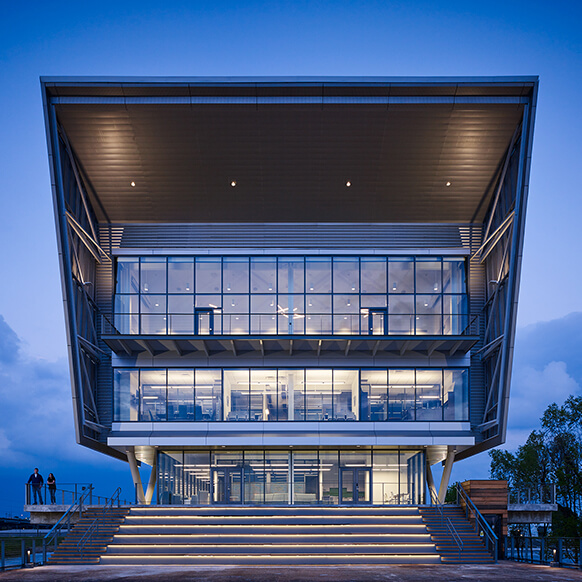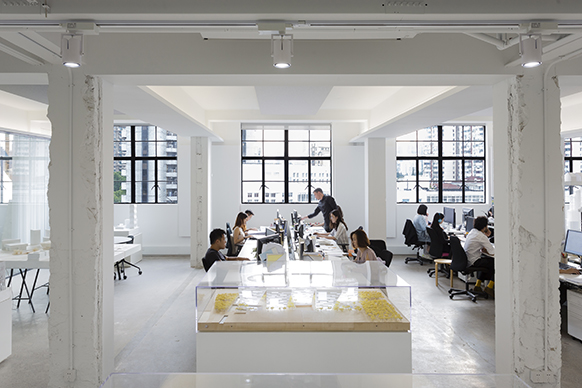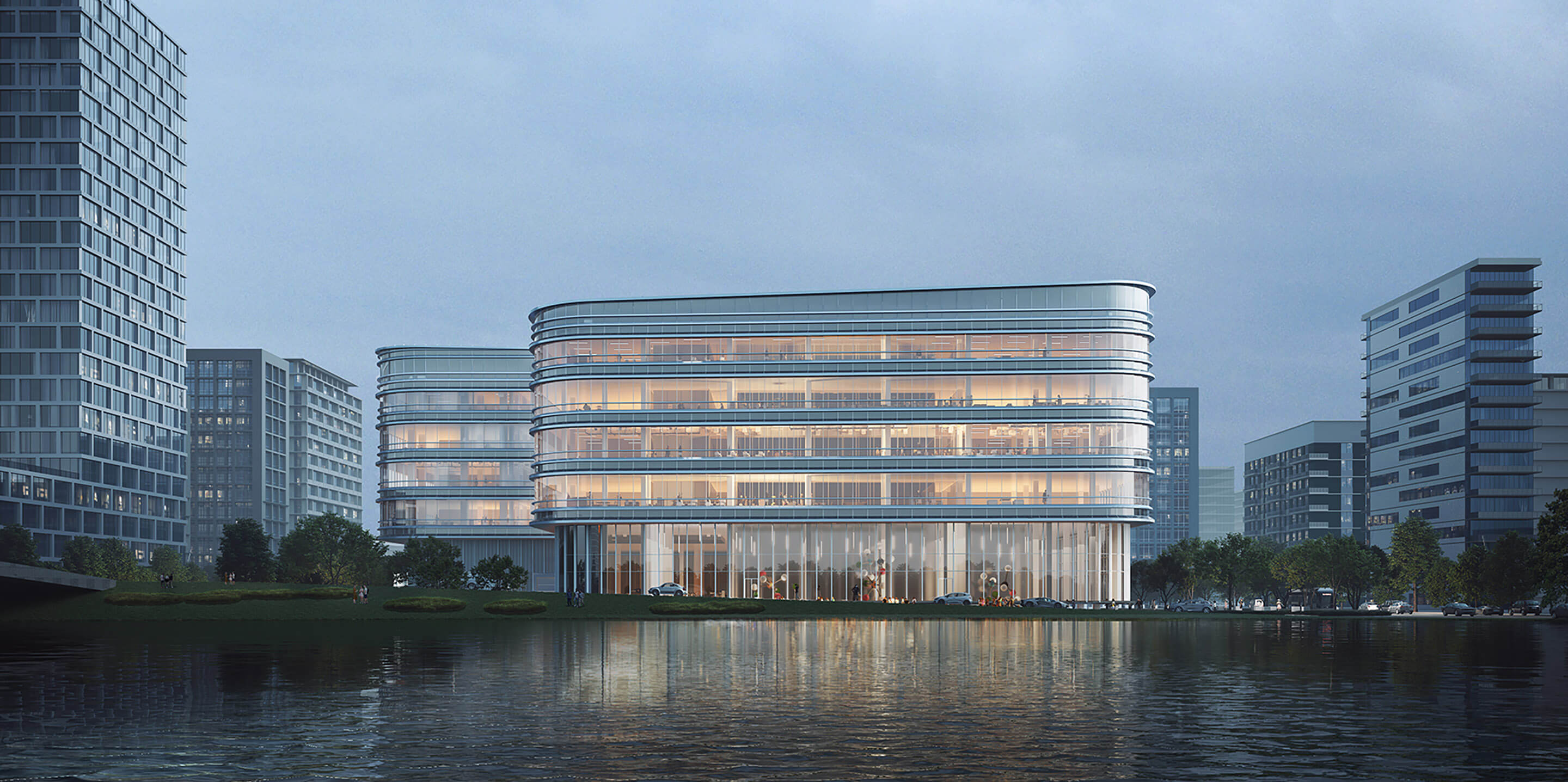
PetroChina Advanced Materials Research Institute
The Advanced Materials Research Institute is a new materials research institute designed by Perkins&Will for PetroChina in the Lingang Special Area in Shanghai. This project follows the successful completion of the PetroChina Energy Research Institute in Beijing.
The new institute will focus on developing advanced materials for emerging industries, for use in medicine, electronic information engineering, electric vehicles, and aerospace. It is the first project to be established in the prestigious Science & Technology District of Shanghai Lingang Special Area and represents a pivotal milestone in PetroChina’s transformation into a comprehensive international energy company.
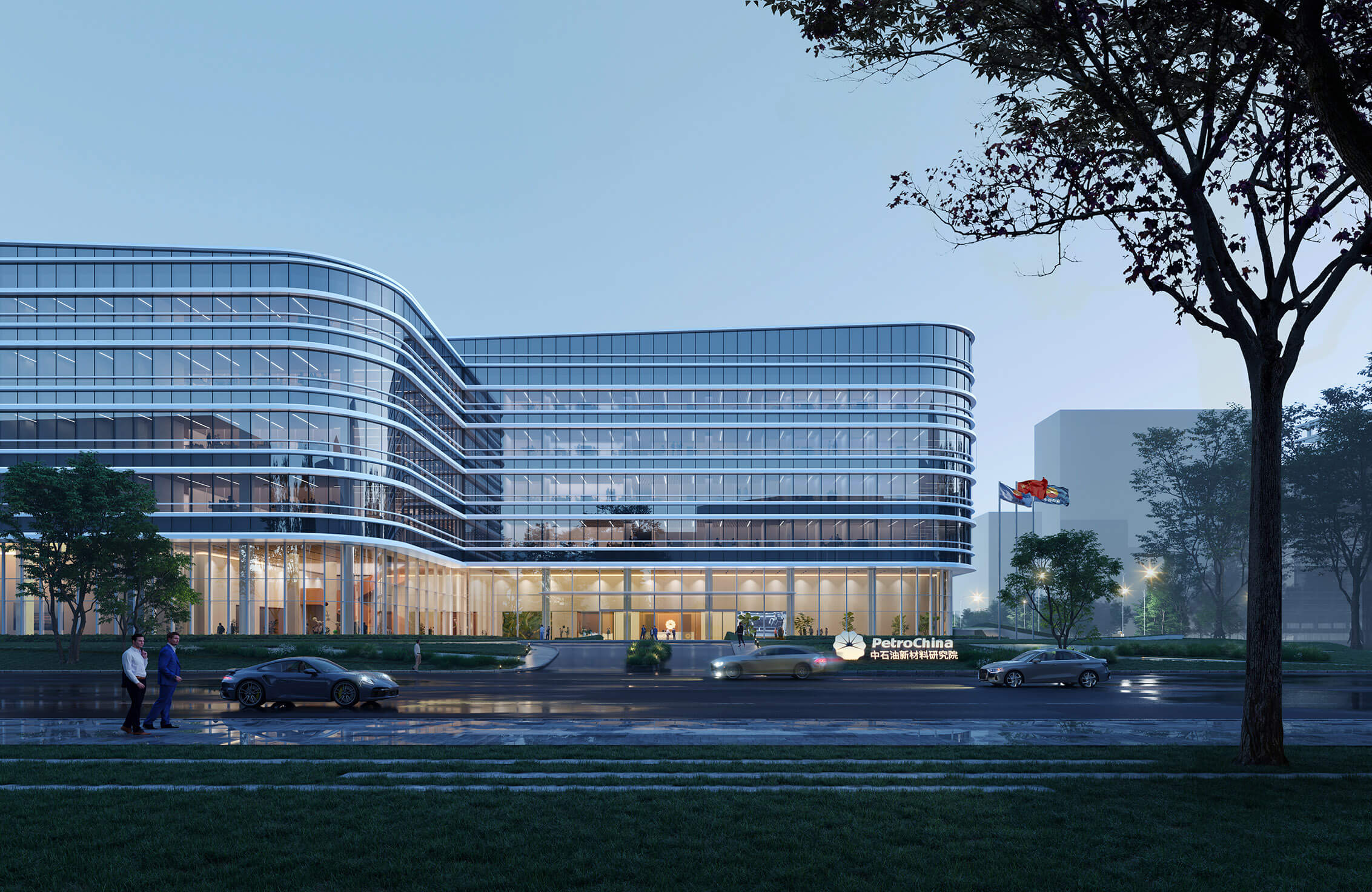
.jpg)
—Liping Wu, Executive Director of PetroChina Advanced Materials Research Institute
The project is located at a prominent riverfront location at the core of the future New Science and Technology District in Shanghai, Lingang. The building form creates a pair of public plazas facing out towards the city and the neighborhood. At the centre of the plan, a pair of open courtyards create a place of connection and opportunity for creative collaboration for the scientists working within the complex.
PetroChina Advanced Materials Research Institute is both a world-class laboratory building, that will meet the demands of cutting-edge scientific research, and also a prestigious corporate headquarters, encouraging academic and business communications.
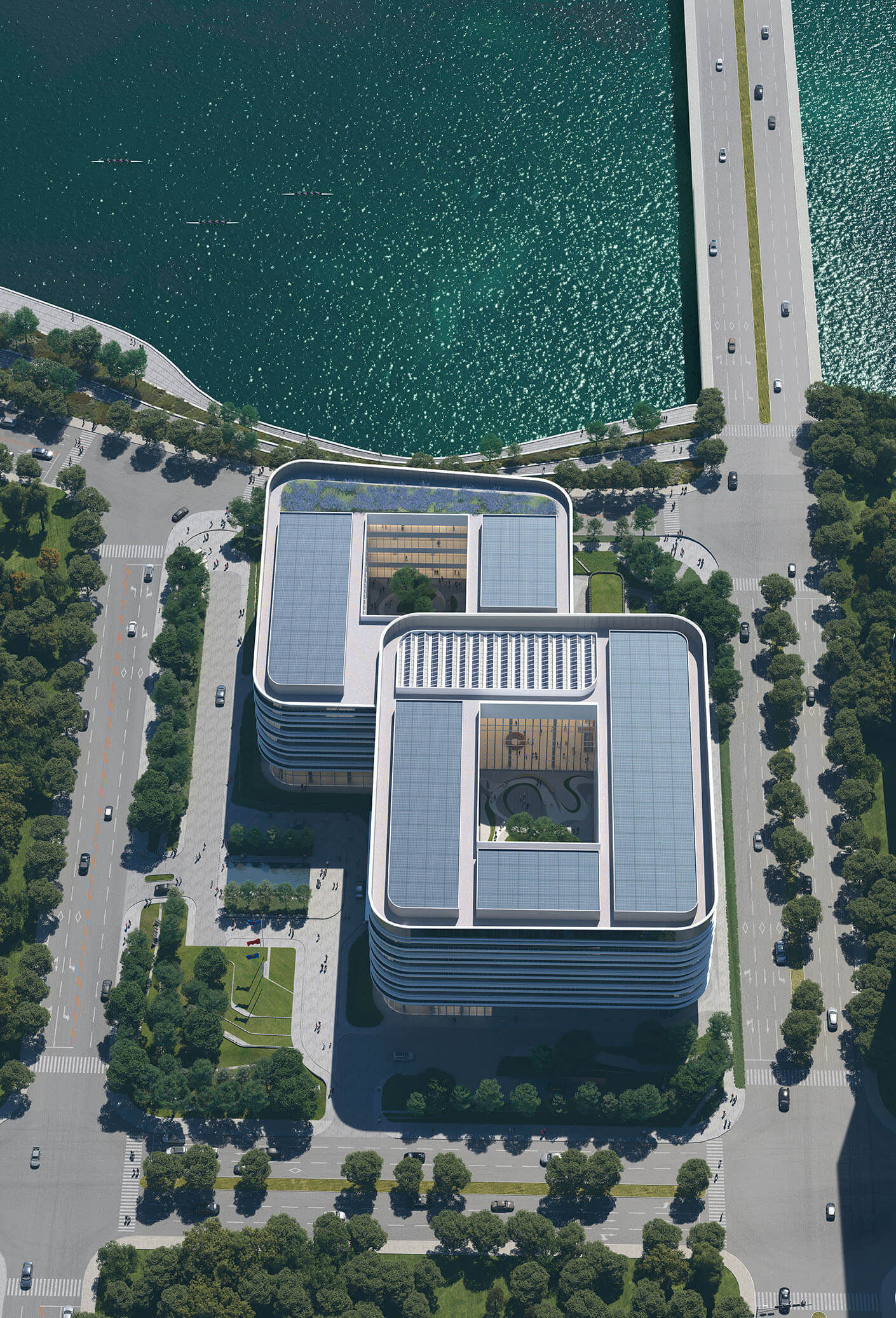
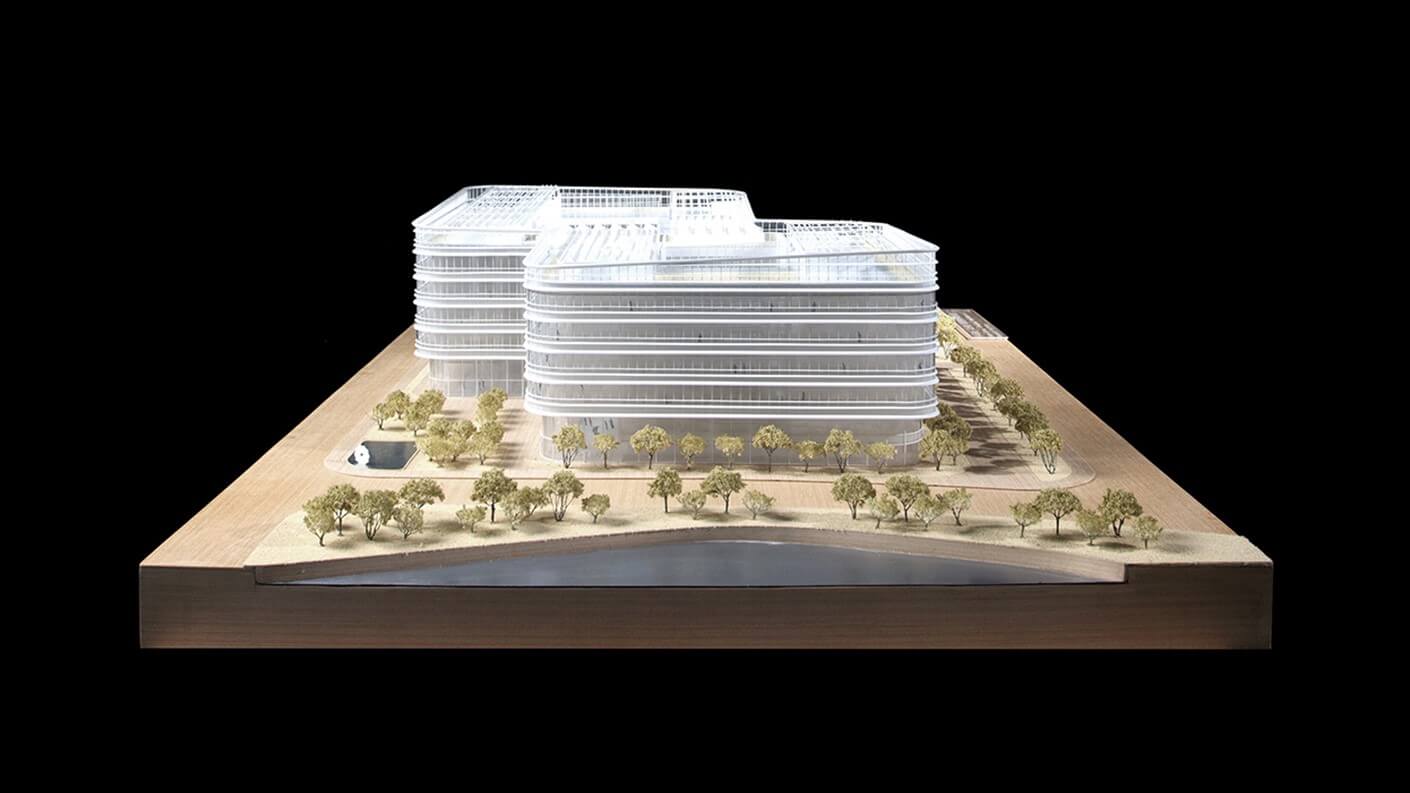
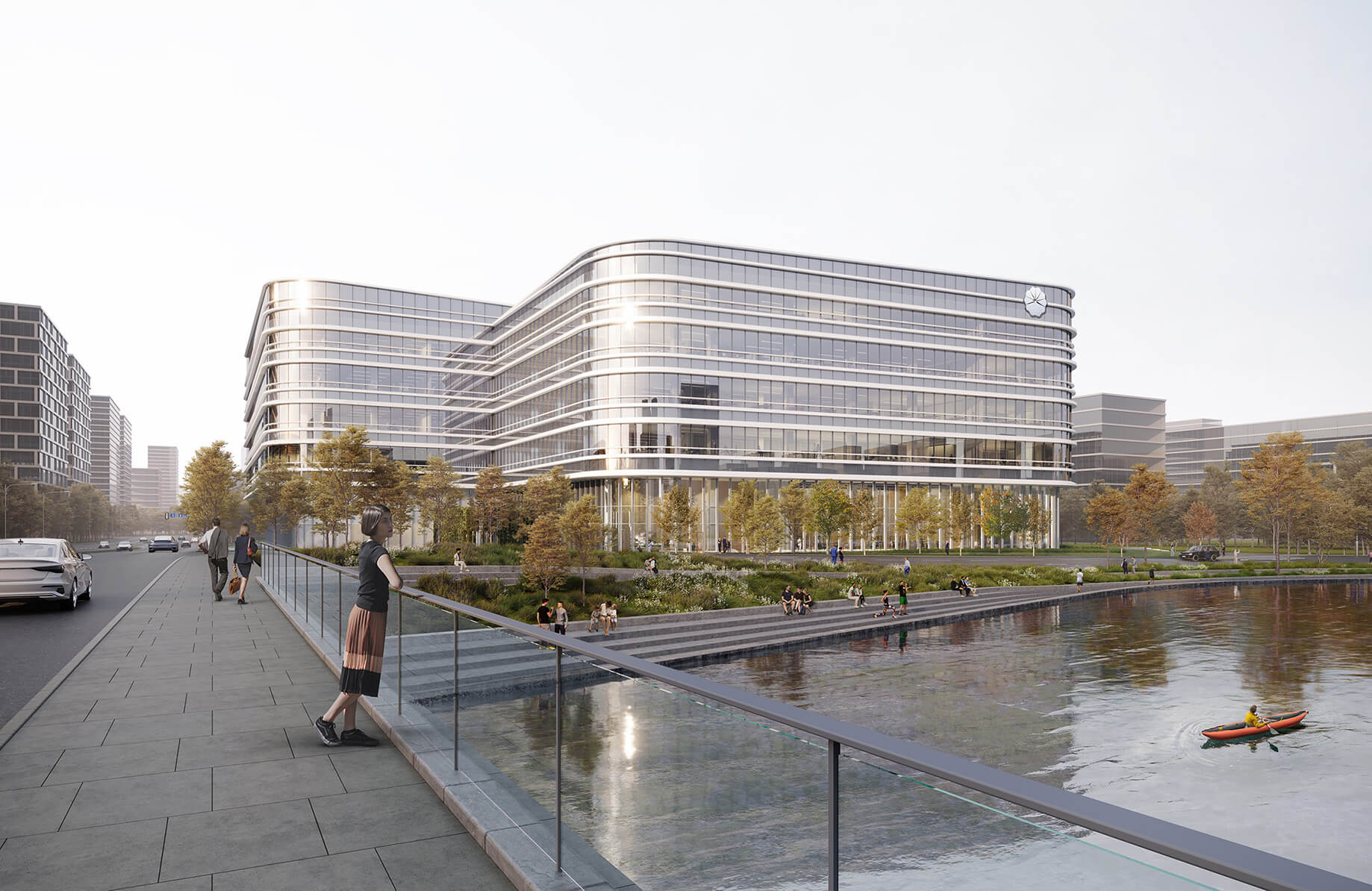
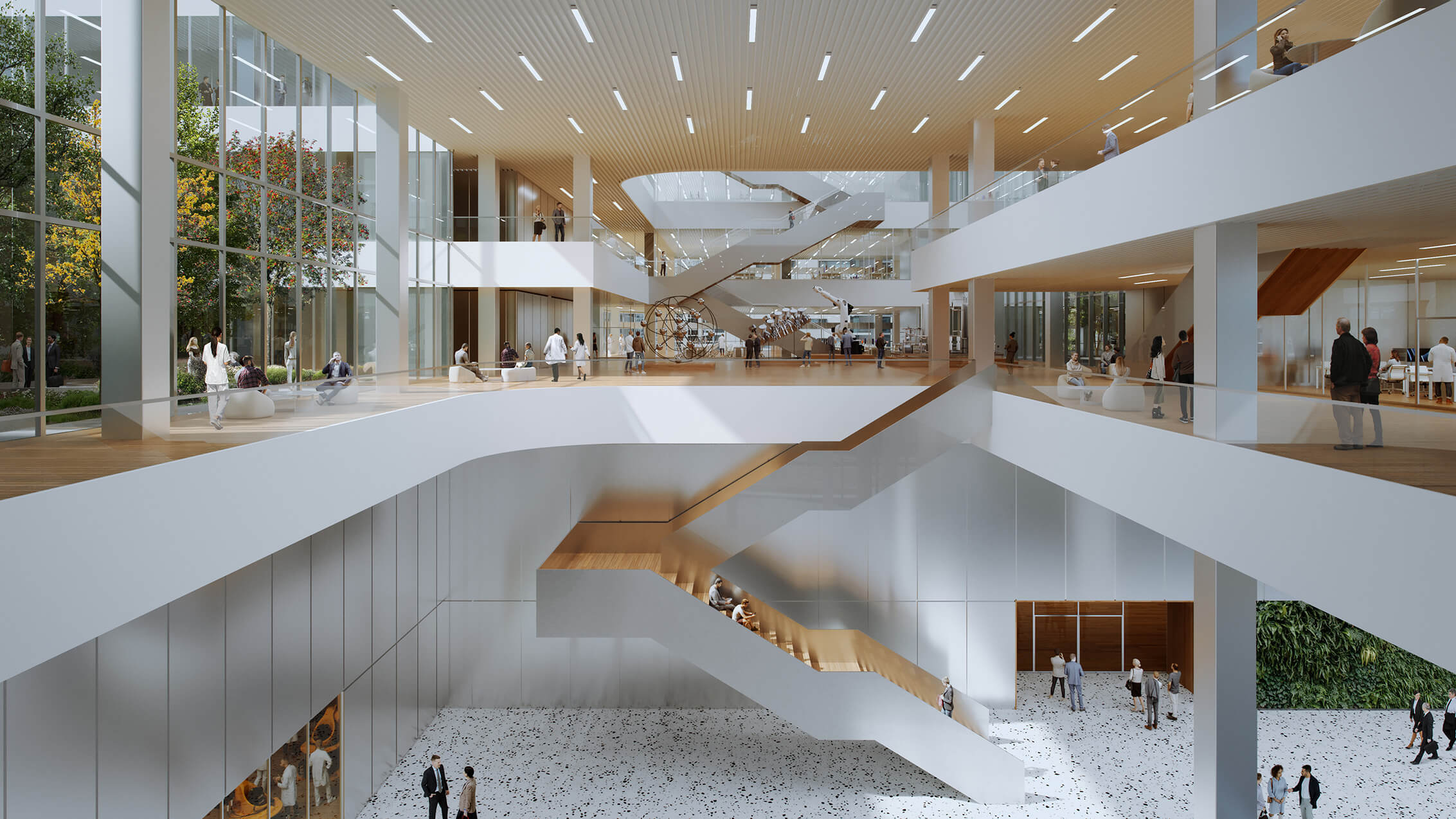
The multi-level public areas are designed to enhance an open and welcoming environment. The ground floor lobby and the central hall step up through the heart of the building as overlapping volumes, lit from above and connected by open stairs.

The building has eight research departments and a series of shared laboratories, collectively supporting scientific endeavor. The laboratories and write-up office spaces are arranged as parallel modular spaces, allowing for future changes of the department layouts. The office spaces are arranged along the perimeter walls to allow views out to the surrounding greenery.
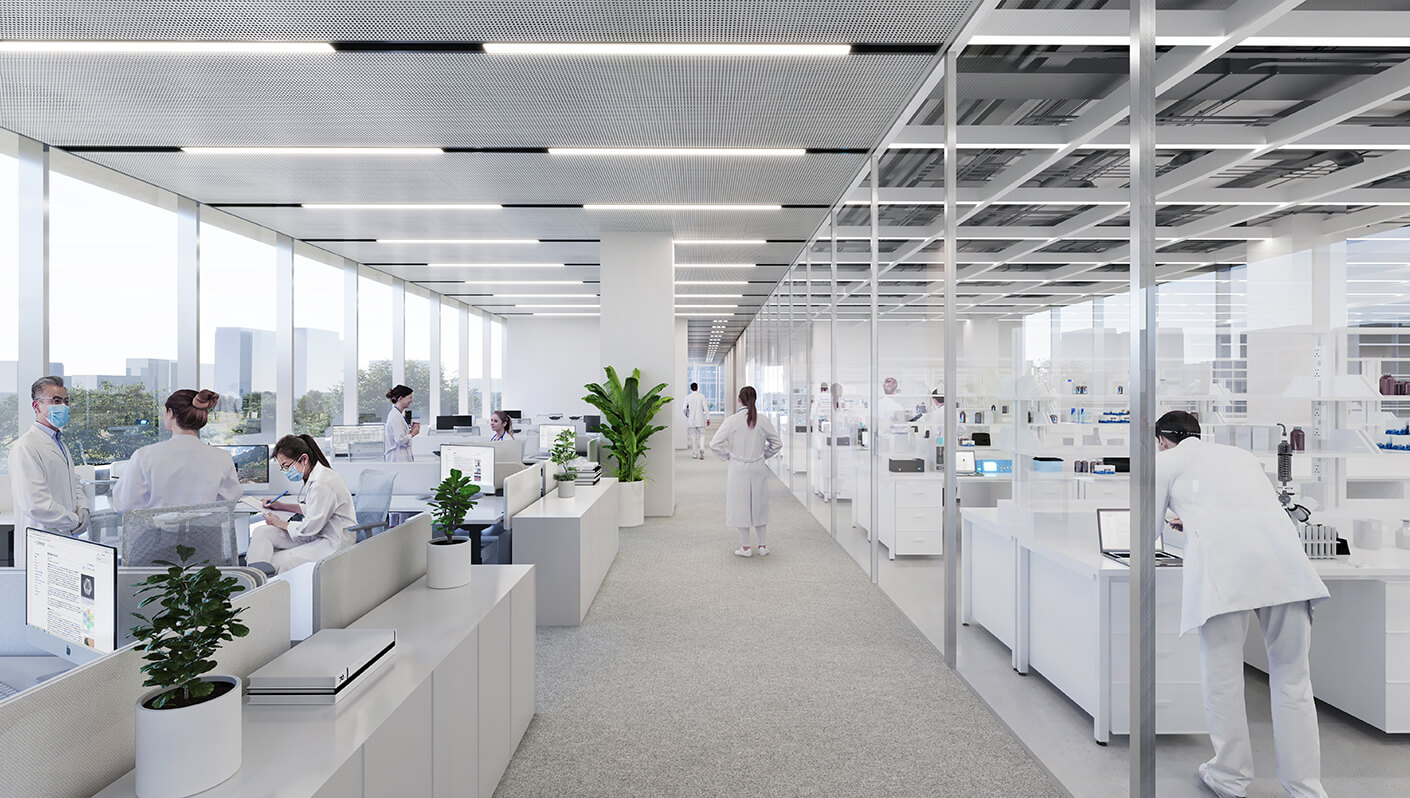
To maximise energy efficiency, a combination of an optimized layout and an enhanced HVAC system is employed. This approach is complemented by energy-saving measures through efficient building energy management and a high-performance building envelope. Photovoltaic panels are strategically integrated as part of the building façades and roof systems, generating energy for building use. The project also supports the low-carbon strategies of the larger Lingang Science and Technology area by establishing energy stations and Tesla MegaPack large-scale energy storage systems.

